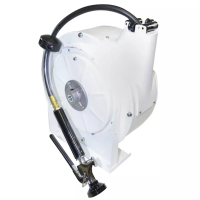Lit. No. 94430/94431, Rev. 07 14 January 15, 2014
DRIVING AND SPREADING ON SNOW
AND ICE
Follow your vehicle owner's manual instructions for
driving in snow and ice conditions. Remember, when
you drive on snow or ice, your wheels will not get good
traction. You cannot accelerate as quickly, turning
is more difcult, and you will need longer braking
distance. Wet and hard packed snow or ice offer the
worst tire traction. It is very easy to lose control. You
will have difculty accelerating. If you do get moving,
you may have poor steering and difcult braking,
which can cause you to slide out of control.
CAUTION
Drinking and then driving or spreading is
very dangerous. Your reexes, perceptions,
attentiveness and judgement can be affected
by even a small amount of alcohol. You can
have a serious or even fatal collision if you
drive after drinking. Please do not drink then
drive or spread ice-control materials.
OPERATING THE SPREADER
Here are some tips for driving in these conditions:
• Drive defensively.
• Do not drink, then drive or spread ice‑control
materials.
• Spread or drive only when you have good visibility
for operating a vehicle.
• If you cannot see well due to snow or icy
conditions, you will need to slow down and keep
more space between you and other vehicles.
• Slow down, especially on higher‑speed roads.
Your headlamps can light up only so much road
ahead.
• If you are tired, pull off in a safe place and rest.
• The spreader's size and location reduce driver
visibility to the rear of the vehicle. We recommend
an OSHA compliant backup alarm for all governed
employers.
• Keep your windshield and all glass on your vehicle
clean to see around you.
• Dress properly for the weather. Wear layers of
clothing; as you get warm, you can take off layers.

